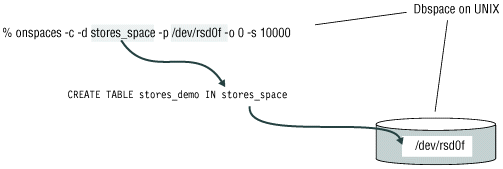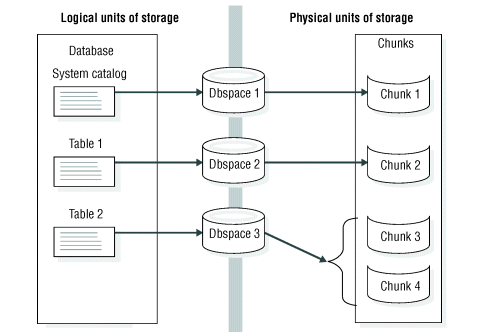Control of where simple large object data is stored
A key responsibility of the database server administrator is to control where the database server stores data.
By storing high-use access tables or critical dbspaces (root dbspace, physical log, and logical log) on your fastest disk drive, you can improve performance. By storing critical data on separate physical devices, you ensure that when one of the disks that holds noncritical data fails, the failure affects only the availability of data on that disk.
As the following figure shows, to control the placement of databases
or tables, you can use the IN dbspace option of
the CREATE DATABASE or CREATE TABLE statements.
Figure 1. Control table placement with the CREATE
TABLE... IN statement

Before you create a database or table in a dbspace, you must first create the dbspace.
A dbspace includes one or more chunks, as the following figure
shows. You can add more chunks at any time. A database server administrator
must to monitor dbspace chunks for fullness and to anticipate the
necessity to allocate more chunks to a dbspace. When a dbspace contains
more than one chunk, you cannot specify the chunk in which the data
is located.
Figure 2. Dbspaces
that link logical and physical units of storage
